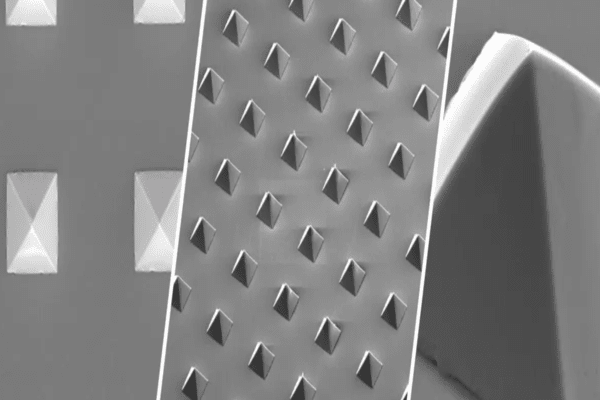
Credit: Daniel Valles and Yerzhan Zholdassov/Advanced Science Research Center/City University of New York
Mechanical chemistry, or mechanochemistry, is the crushing of chemicals to produce reactions and substances. For instance, diamonds are created when carbon is squeezed under enormous pressure inside the Earth, and similarly, crushing together two or more compounds with a mortar and pestle can result in a range of different chemicals.
And while mechanochemistry reactions have been well understood at the macro-scale, the atomic-scale processes at the core of such crushing transformations are not fully comprehended or predictable.
Demystifying these granular reactions is the central goal of the National Science Foundation’s (NSF) Center for the Mechanical Control of Chemistry, an interdisciplinary and multi-institutional collaboration.
Robert Carpick, John Henry Towne Professor in the Department of Mechanical Engineering and Applied Mechanics in the School of Engineering and Applied Science, and Andrew Rappe, Blanchard Professor of Chemistry in the Department of Chemistry in the School of Arts & Sciences, with a secondary appointment in the Department of Materials Science and Engineering, are part of this multi-institution team focused on harnessing mechanochemistry’s potential as a reliable, versatile method for chemical synthesis and an enabling technology for sustainability and green chemistry.
The center, managed by Texas A&M University, is being scaled up with an additional $20 million from NSF as part of a phase two award from its Centers for Chemical Innovation (CMCC) program, which supports multiple centers aimed at solving fundamental challenges in chemical research and developing subsequent innovations. CMCC received a $2 million phase one award in 2020. The additional funding will enable the center to become a nexus for mechanical chemistry research across the U.S. by supporting work at 11 U.S. institutions in nine states.
The new funding will provide the center with instruments capable of investigating the effects of mechanical force at the atomic level, such as atomic force microscopes, electron microscopes, high-pressure diamond anvils and others. The center will help grow the scientific workforce through training and mentorship for early-career postdoctoral researchers, undergraduate and graduate students, and it will conduct educational outreach activities with local K-12 students and teachers.
This release was produced in collaboration with Nathi Magubane and the National Science Foundation (NSF).
